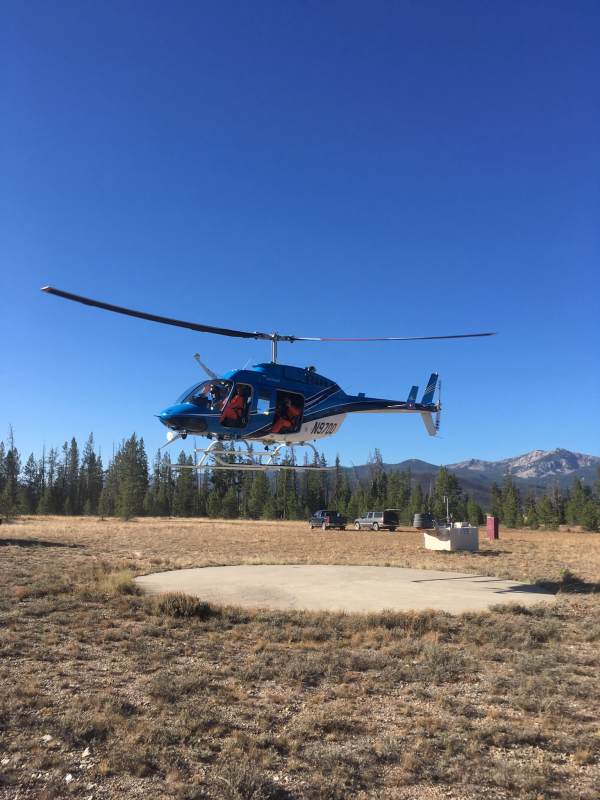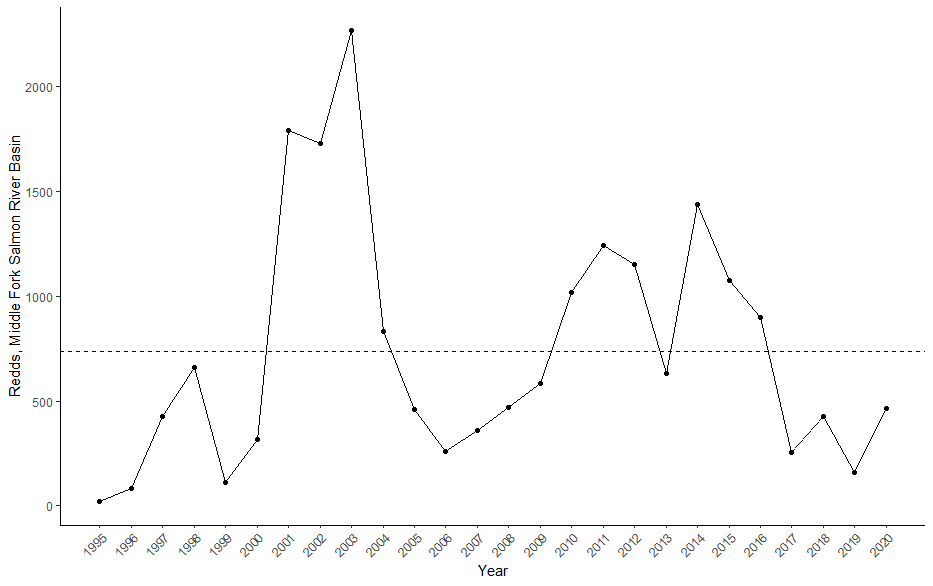Counting Chinook in the River of No Return
 |
By Conor McClure, Regional Fisheries Biologist
In September, IDFG conducted its annual aerial Chinook Salmon survey in the Frank Church - River of No Return Wilderness (i.e., Middle Fork Salmon River and tributaries) where biologists surveyed approximately 460 miles of available spawning habitat from a helicopter. Aerial surveys began in 1957 and small airplanes were initially used. While helicopters have replaced airplanes for the surveys, aerial methods have been the primary means to survey much of the wilderness due to its remote nature and difficult access.
The Chinook Salmon redds (nests that the salmon dig and deposit their eggs in) observed during aerial surveys are added to counts that take place from the ground and provide the total observed redds in the Frank Church. This population is unique because it is a wild and indigenous stock that has been spawning in the area for thousands of years with little to no hatchery influence. The Chinook that return to the Middle Fork Salmon River and its tributaries swim more than 800 miles and pass eight dams in order to spawn. Information collected during the surveys help fisheries staff make predictions about future returns, monitor trends over time, and guide management decisions.
Chinook redd abundance has varied a lot over the years in the Frank Church. Since 1995, last year was one of the lowest counts on record with only 161 redds observed. However, this year’s count was up with 467 redds observed. Although the total was below average when compared to historical data, this year’s increase is encouraging. Let’s hope this improvement continues in the years to come!



 Advertising
Advertising